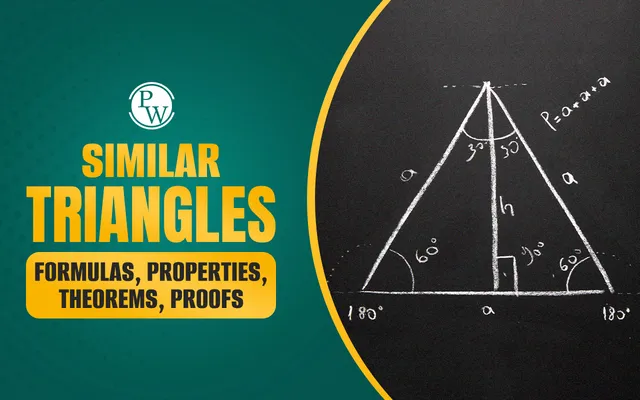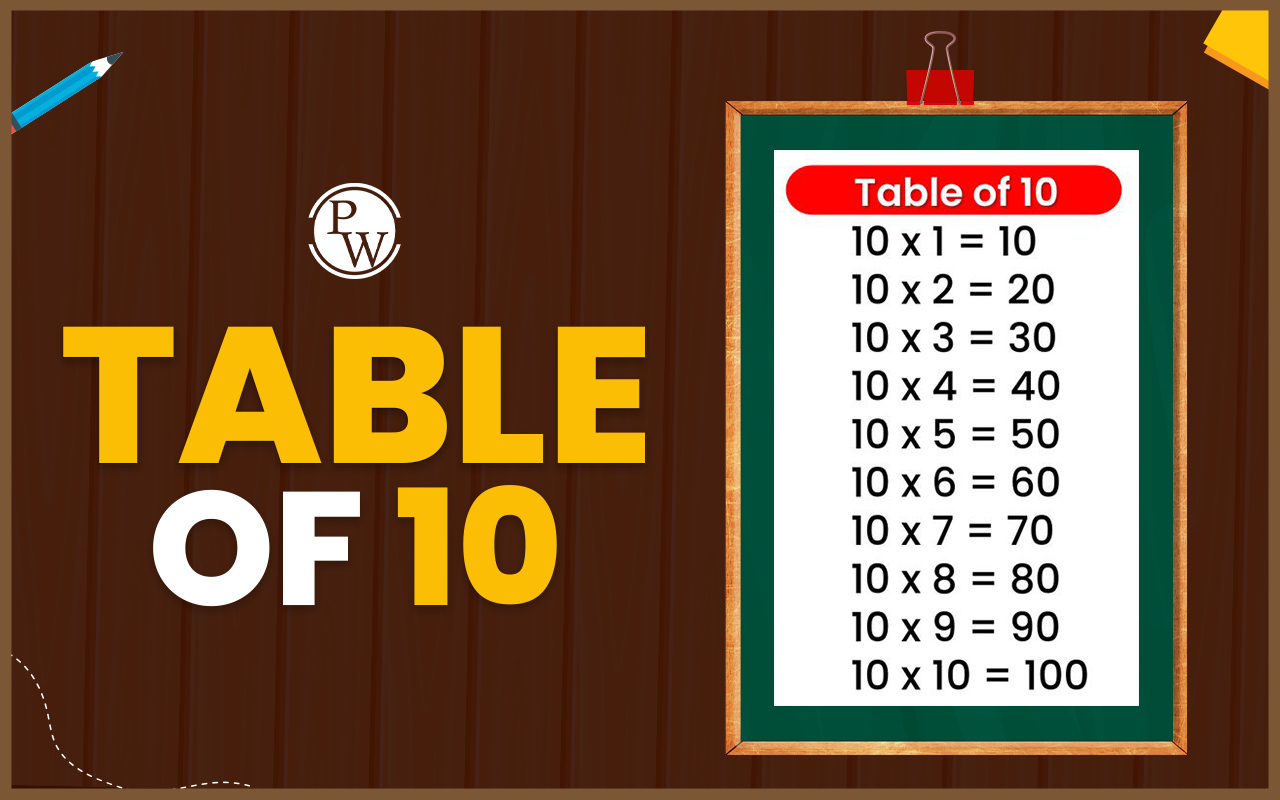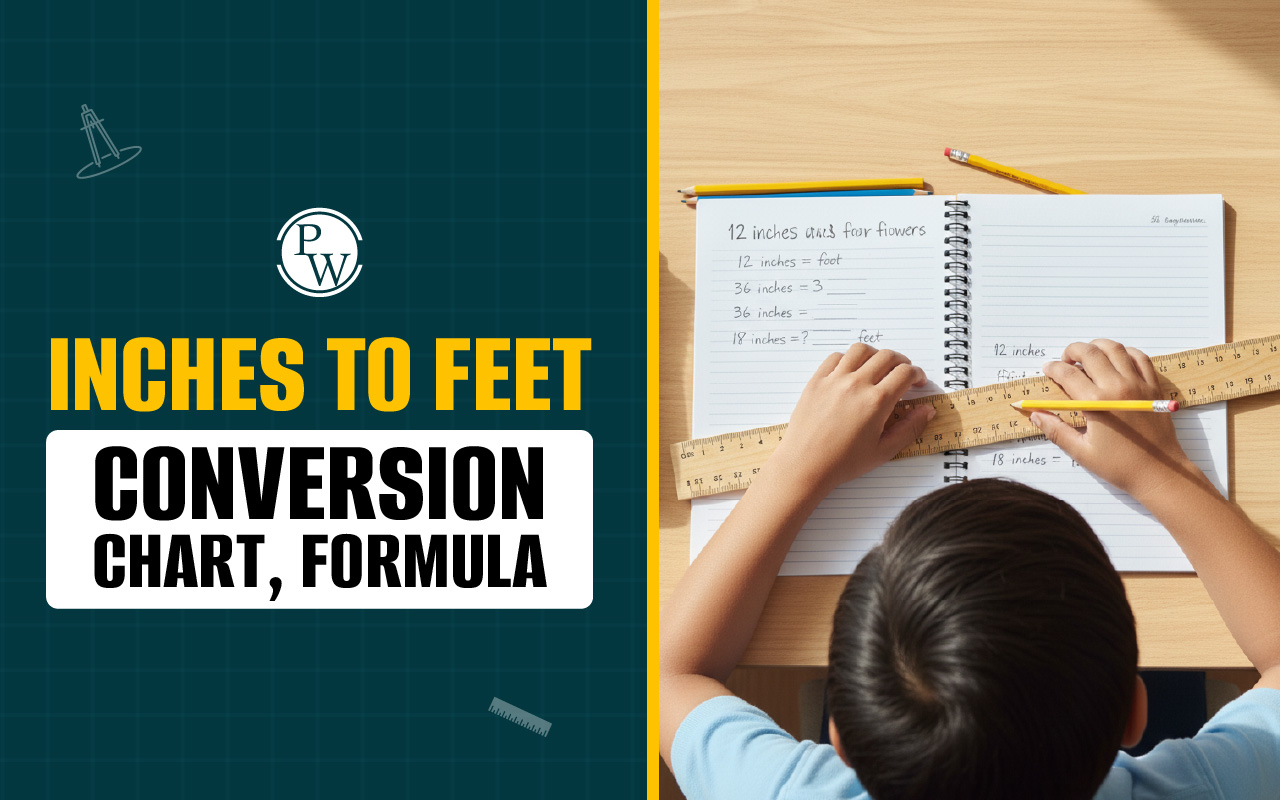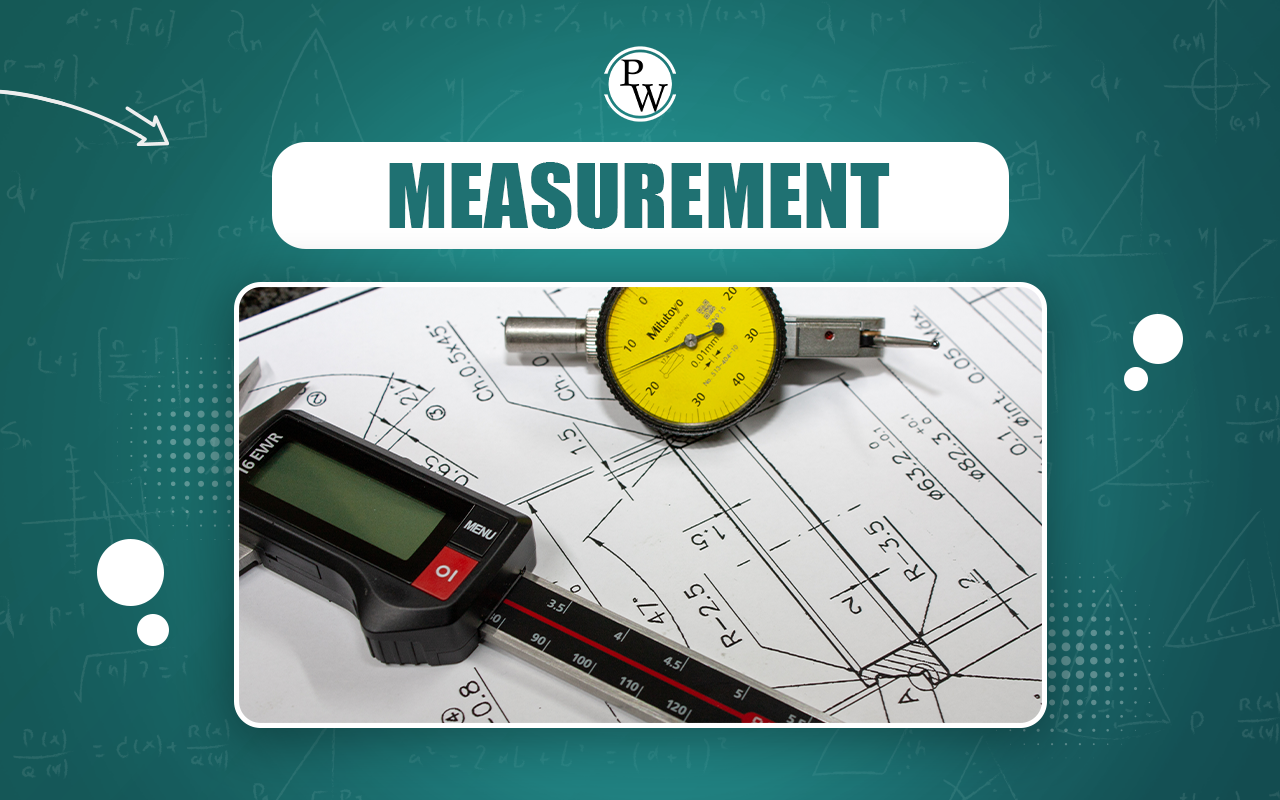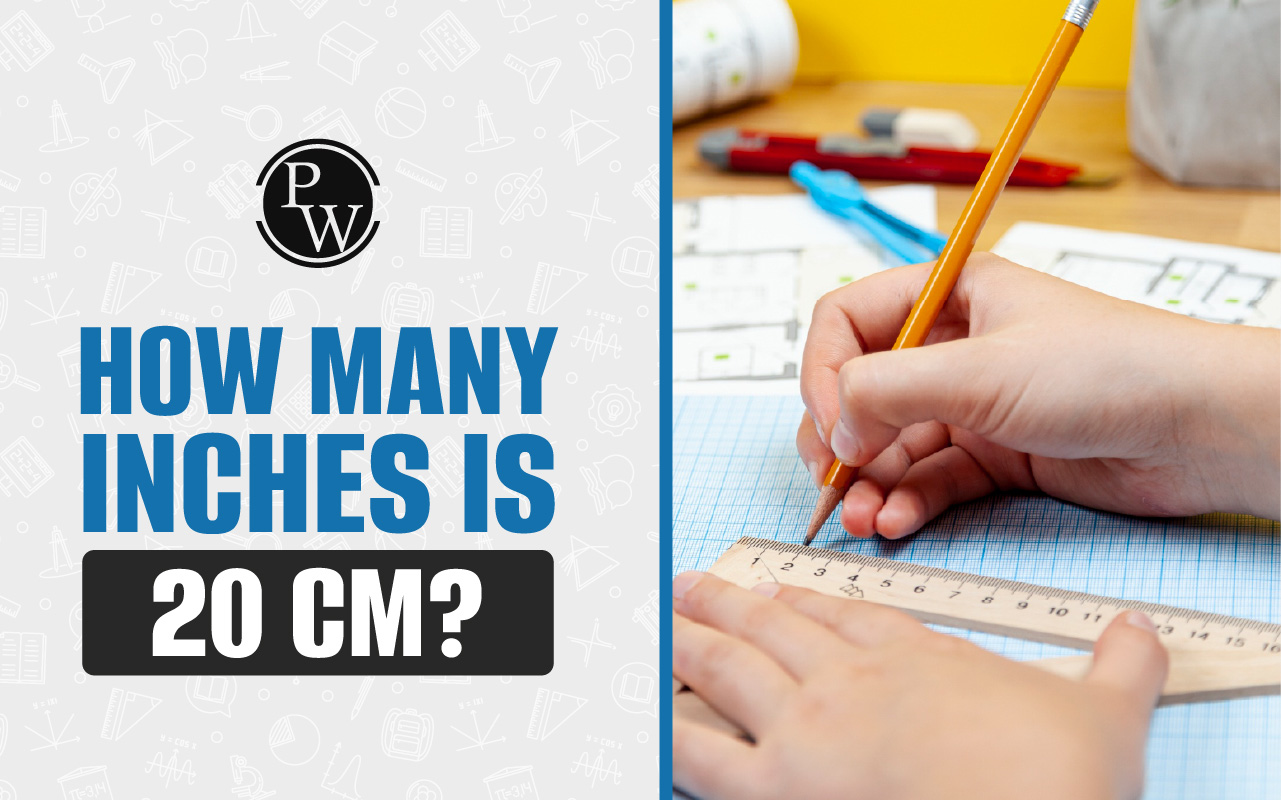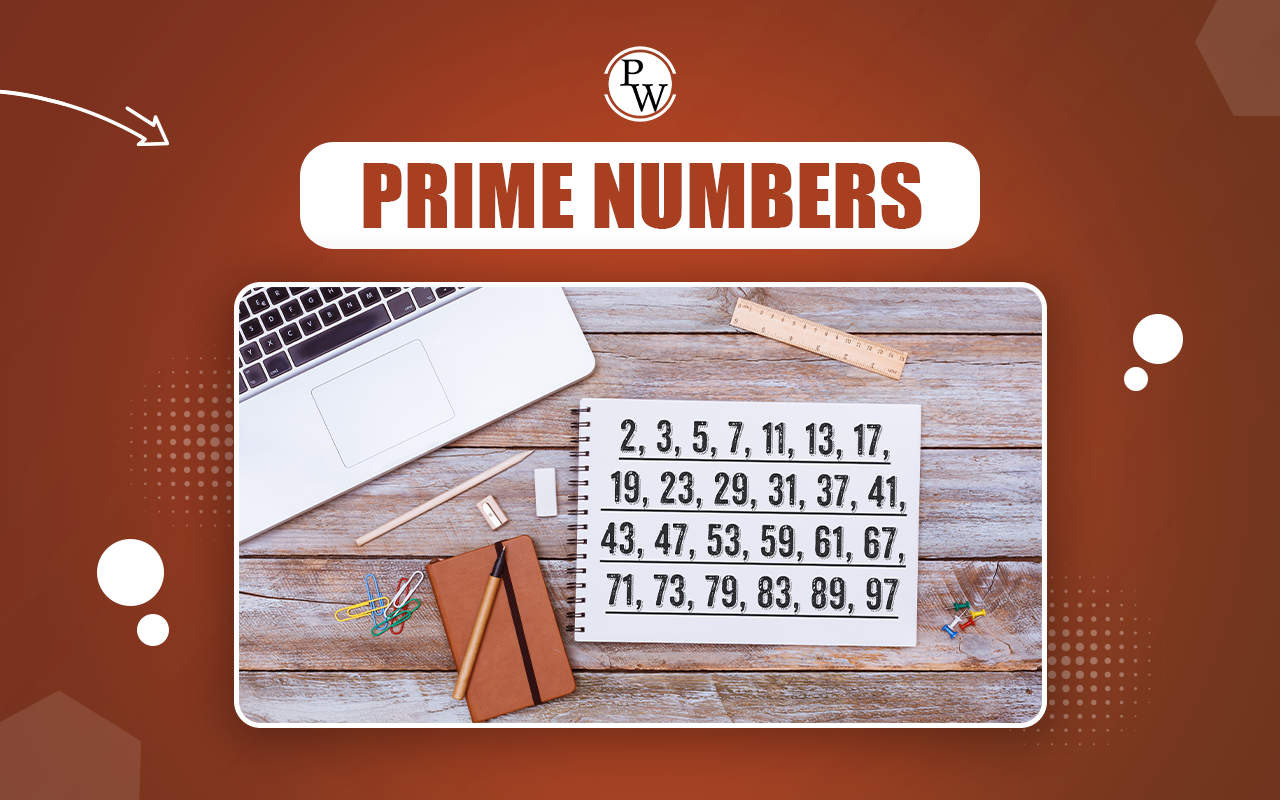
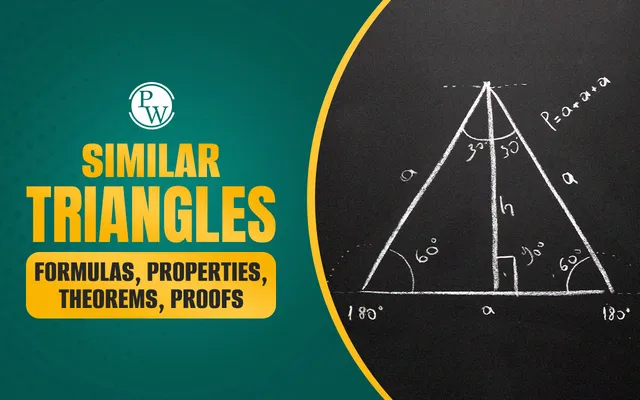
Similar Triangles: Many of your math lessons include triangles and you must have noticed that some triangles can look exactly the same even if they are different in size. These are called similar triangles. They have the same shape, equal angles, and their sides follow the same ratio. In this blog, you will learn how to identify similar triangles and learn formulas, properties, theorems, and proofs to solve problems related to them.
What Are Similar Triangles?
Two triangles are called similar when they have the same shape, but their sizes can be different.
This means two things:
The angles in both triangles are the same. For example, if one triangle has a 60°, 60°, and 60° angle, the other triangle must have those same angles.
The sides of two triangles are said to be in the same ratio when the lengths of corresponding sides are proportional.
This does not mean the sides are exactly the same length; one triangle could be a smaller or larger version of the other, but the shape remains the same.
We indicate that two triangles are similar using the tilde (~) symbol.
For example, if triangle ABC is similar to triangle i.e.PQR, we write:
△ABC ~ △PQR
Properties of Similar Triangles
Similar triangles have some characteristics that make it easy to compare their shapes, angles, and sides, even if their sizes are different. The main properties of similar triangles are mentioned below:
1. Equal Corresponding Angles
In similar triangles, each angle of one triangle equals the corresponding angle of the other.
For example, if △PQR ~ △MNO, then:
∠P = ∠M, ∠Q = ∠N, and ∠R = ∠O.
So, even if △PQR is larger, the angles stay equal. If ∠P is 60°, then ∠M must also be 60°.
2. Proportional Corresponding Sides
In similar triangles, the measurements of the corresponding sides are in the same ratio.
Example:
Let’s say, in triangles △ABC and △XYZ,
AB = 6 cm, BC = 9 cm, AC = 12 cm
XY = 3 cm, YZ = 4.5 cm, XZ = 6 cm
Then,
AB / XY = 6 / 3 = 2
BC / YZ = 9 / 4.5 = 2
AC / XZ = 12 / 6 = 2
All sides are in the same ratio (2), which means △ABC ~ △XYZ
Read More: Scalene Triangle
3. Preserved Shape
Even if one triangle is larger or smaller than the other, they both keep the same overall shape. This happens because both the angles and side ratios match.
For example, Triangle ABC may be twice the size of triangle XYZ, but both look the same in shape, only the size changes.
4. Area Ratio
The ratio of areas of similar triangles is equal to the square of the ratio of their corresponding sides.
For example, if triangle ABC is similar to triangle XYZ, and AB / XY = 2, then Area (ABC) / Area (XYZ) = 2² = 4
So, triangle ABC has 4 times the area of triangle XYZ.
5. Orientation
Similar triangles remain in the same direction or layout unless one of them is flipped or rotated. Both triangles maintain the same orientation if both point upward and have the same angle order.
Read More: Isosceles triangle
Types of Similar Triangles
In geometry, the concept of similar triangles is based on how their side lengths and angles relate. There are no definite categories of triangles that are always similar (unlike equilateral triangles being always congruent). However, some common types of triangles that result in similarity include the following:
Equilateral Triangles: All equilateral triangles are similar since all their angles (60°) and side ratios are equal.
Isosceles Right Triangles: Triangles with angles of 45°, 45°, and 90° are similar to each other.
30°-60°-90° Triangles: Right triangles with fixed internal angles are always similar, regardless of scale.
Similar Triangles Rules
There are three rules or criteria to determine whether two triangles are similar. These are fundamental rules in checking the similarity between triangles.
1. AA (Angle-Angle) Criterion
If two angles of one triangle are the same as two angles of another triangle, the triangles are said to be similar. Since the sum of internal angles in any triangle is 180°, the third angle will also be equal, which means all corresponding angles are equal.
For example, If ∠A = ∠D and ∠B = ∠E, then △ABC ~ △DEF.
2. SSS (Side-Side-Side) Rule
This rule considers all three sides of the triangles. Two triangles are considered as similar, if all the corresponding sides are in the same ratio. For example, if AB/PQ = BC/QR = AC/PR, then △ABC ~ △PQR.
3. SAS (Side-Angle-Side) Criterion
If two sides of one triangle match the ratio of two sides of another triangle, and the angle between those sides is the same, then the triangles are similar.
For example, if AB/DE = AC/DF and ∠A = ∠D. This means △ABC is similar to △DEF.
Read More: How to Find the Angle of a Triangle
Theorems of Similar Triangles
To prove that two triangles are similar, we use three important theorems. These theorems help us decide whether two triangles have the same shape (even if their sizes are different). They are based on either comparing angles, sides, or both.
These three theorems are:
-
AA (Angle-Angle) Similarity Theorem
-
SSS (Side-Side-Side) Similarity Theorem
-
SAS (Side-Angle-Side) Similarity Theorem
Let’s understand each one in detail:
1. AA (Angle-Angle) Similarity Theorem
If any two angles of one triangle are equal to any two angles of another triangle, the triangles are similar.
Example:
In triangle ABC: ∠A = 50°, ∠B = 60°
In triangle XYZ: ∠X = 50°, ∠Y = 60°
Since two angles are equal, the third angle will also be equal (∠C = ∠Z = 70°).
So, according to AA similarity theorem, △ABC ~ △XYZ
2. SSS (Side-Side-Side) Similarity Theorem
If each of the three sides of one triangle maintains the same ratio with each of the three sides of another triangle, the triangles are similar.
Example:
In Triangle ABC: AB = 4 cm, BC = 5 cm, AC = 6 cm
In Triangle XYZ: XY = 8 cm, YZ = 10 cm, XZ = 12 cm
Check ratios:
AB / XY = 4 / 8 = 0.5
BC / YZ = 5 / 10 = 0.5
AC / XZ = 6 / 12 = 0.5
Since all sides are in the same ratio, then according SSS similarity, △ABC ~ △XYZ
3. SAS (Side-Angle-Side) Similarity Theorem
If two sides of a triangle and the corresponding two sides of another triangle are in the same ratio and the angle between them is equal, then the triangles are similar.
Example:
In triangle ABC: AB = 15 cm, AC = 21 cm, ∠A = 60°
In triangle XYZ: XY = 5 cm, XZ = 7 cm, ∠X = 60°
Check side ratios:
AB / XY = 15 / 5 = 1/3
AC / XZ = 21 / 7 = 1/3
And ∠A = ∠X = 60°
So, according to SAS similarity, △ABC ~ △XYZ
Formula for Similar Triangles
Several mathematical relationships can be established between similar triangles to solve problems. These relationships or formula for similar triangles include the following:
1. Ratio of Corresponding Sides
If △ABC ~ △DEF, then:
AB/DE = BC/EF = AC/DF
2. Ratio of Areas
The ratio of the areas of two similar triangles is equal to the square of the ratio of their corresponding sides:
Area(ABC) / Area(DEF) = (AB/DE)²
3. Ratio of Perimeters
The ratio of perimeters of similar triangles is the same as the ratio of their corresponding sides:
Perimeter (ABC) / Perimeter (DEF) = AB/DE
Example 1
Given:
In similar triangles △ABC and △PQR,
-
AB = 9 cm
-
BC = 12 cm
-
PQ = 3 cm
Find the length of side QR.
Solution: Since the triangles are similar, the corresponding sides are in the same ratios.
AB corresponds to PQ, and BC corresponds to QR
Use the proportion:
AB/PQ = BC/QR
Substitute the values:
9/3 = 12/QR
Simplify:
3 = 12/ QR
Multiply both sides by QR:
3 × QR = 12
Solve for QR:
QR = 12/3 = 4 cm
Therefore, QR = 4 cm
Example 2: Two triangles have the following side lengths:
Triangle ABC: AB = 5 cm, BC = 7.5 cm, AC = 10 cm
Triangle DEF: DE = 10 cm, EF = 15 cm, DF = 20 cm
Are the triangles similar? Use the SSS similarity rule to justify your answer.
Solution:
Compare the ratios of corresponding sides:
AB/DE = 5/10 = 0.5
BC/EF =7.5/15=0.5
AC/DF=10/20 = 0.5
All three ratios are equal.
Yes, the triangles are similar by SSS theorem (all corresponding sides are in the same ratio).
Question 3: Use SAS to Prove Similarity
In △XYZ and △PQR:
-
XY = 6 cm, XZ = 9 cm, ∠X = 60°
-
PQ = 12 cm, PR = 18 cm, ∠P = 60°
Are the two triangles similar? Use the SAS similarity rule.
Solution:
Check the ratio of the two sides:
XY/PQ = 6/12 = 0.5
XZ/PR = 9/18 = 0.5
The included angle ∠X = ∠P = 60°, and the side ratios are equal.
Yes, the triangles are similar by SAS theorem (two sides in proportion and the included angle is equal).
Also Read: Ratio and Proportion
Real-Life Applications of Similar Triangles
The concept of similar triangles is used in many fields to measure distance, height, and scale. Let’s look at some of the common applications:
Surveying and Mapping: Properties of similar triangles are used in surveying and mapping to determine the distances and heights of different land formations.
Architecture and Engineering: Scale models of smaller sizes but similar structures are prepared using the proportion properties of similar triangles.
Astronomy and Navigation: Similar triangle concepts are used in Astronomy and navigation to estimate distances and positions in space and sea.
Optics and Photography: Cameras are designed to capture images of objects from various distances by applying properties of similar triangles.
Make Math Easy and Fun for Your Child with CuriousJr
Is your child struggling with math or losing interest in the subject? CuriousJr Maths online classes turn confusion into confidence and make learning fun. Our expert teachers focus on helping every child understand concepts, practice effectively, and enjoy problem-solving. Here’s what your child will gain from our classes:
-
Simple, Engaging Lessons: Concepts are explained in an easy-to-understand way with real-life examples.
-
Step-by-Step Support: Teachers guide each child at their own pace and provide personal attention.
-
Fun Practice Activities: Interactive exercises to reinforce learning and make math exciting.
-
Homework & Exam Help: Assistance with assignments, revision, and test preparation.
-
Confidence & Motivation: Positive feedback and encouragement to help children believe in their abilities.
Book a demo today and watch your child thrive!
Similar Triangles FAQs
Can two right triangles be similar even if their hypotenuses are different?
Are all isosceles triangles similar to each other?
Can one equal angle between two triangles prove they are similar?
Do similar triangles always face the same direction?

